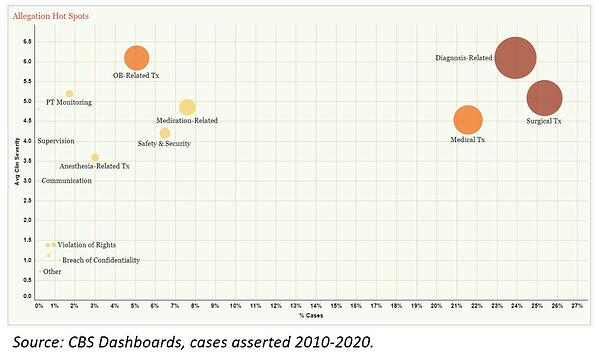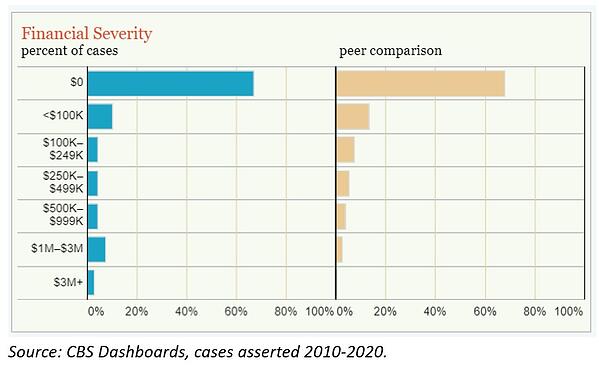For large organizations, the investment of deeply coding their medical malpractice cases, analyzing those data, and then empowering their risk teams to address the identified issues, is a commitment of time, people, and money.
While the returns on these investments are undeniable, budgets are getting squeezed as a result of Covid. I am frequently asked—is there a way to still approach the benefit, while saving some resources? This is where preliminary coding claims can be leveraged.
ACTIONABLE INSIGHTS FROM PRELIMINARY CODED CASES
Preliminary coding is the earliest coding done on a claim, and along with the imported financials—indemnity payments and legal expenses—it identifies high-level attributes of the claims. It still leverages our highly governed taxonomy, but it requires less time as it focuses on four, key clinical attributes from the malpractice claim:
- Major Allegation
- Primary Responsible Service
- Clinical Severity
- Case Type (Inpatient, Outpatient, ED)
By taking this initial high-level look at the organization’s claims and focusing on a handful of clinical and financial data points, we are able to reveal—or validate—to our partners the areas of their highest risk.

Leveraging these insights, organizations choose where they want to focus their attention. Is it in their OB? Typically, there are fewer claims in this area, but the average incurred losses are higher. Or perhaps their ED—where the number of claims are higher, but the causes—like diagnosis issues—can be vexing. Analyzing preliminary coded claims can help make these decisions.
COMPARATIVE BENCHMARKING
To help their decision-making process, we also fold in our national benchmarking data, allowing them to see how they compare to peer organizations. Questions an organization may gain insights to from preliminary coded data when compared to peers include:
- Are organizations in their peer group seeing similar allegations?
- Do peer organizations have a similar claims experience among responsible services?
- How do their financials compare?
- Are their legal expenses, in this specialty’s claims, trending higher?

Answers to these questions can help inform the decision on where best to focus precious resources. This competitive intelligence is also helpful when seeking funding from leadership. Comparative data—especially if your organization is lagging peers—is convincing when leadership is deciding between competing projects.
DEEPLY CODED CLAIMS
Once a preliminary coded project is complete, a next step is to fully code the cases in the identified high-risk area. This deep coding process is how the clinical factors that caused the harm—contributing factors—become fully fleshed out. A diagnosis issue in the ED may be complicated by communication issues between staff and the patient. And if there are policy or protocol breakdowns, this typically translates into higher paid losses.
Deeply coding cases is a key way to provide insights to ensure that the team empowered to fix the problems is both comprehensive and focused in the right direction. There is nothing worse than investing in a fix, only to miss the mark when defining the problem. Having a complete understanding of the contributing clinical factors is a substantial step toward the project’s success.
